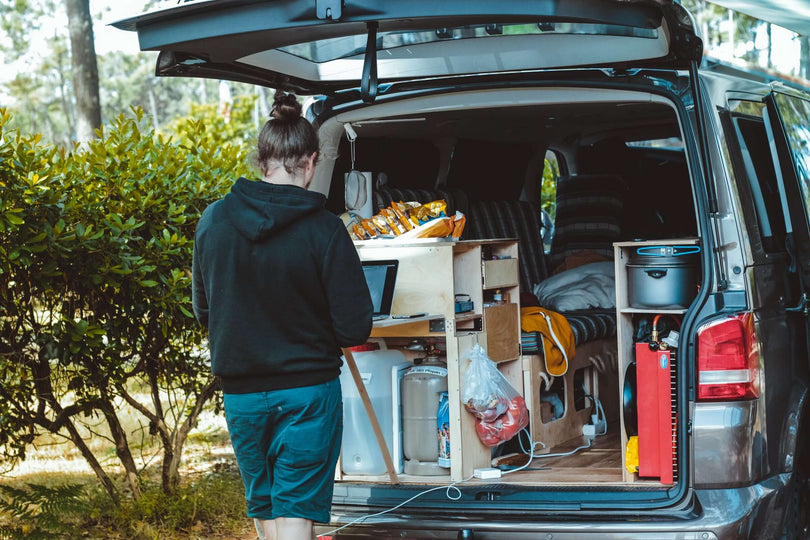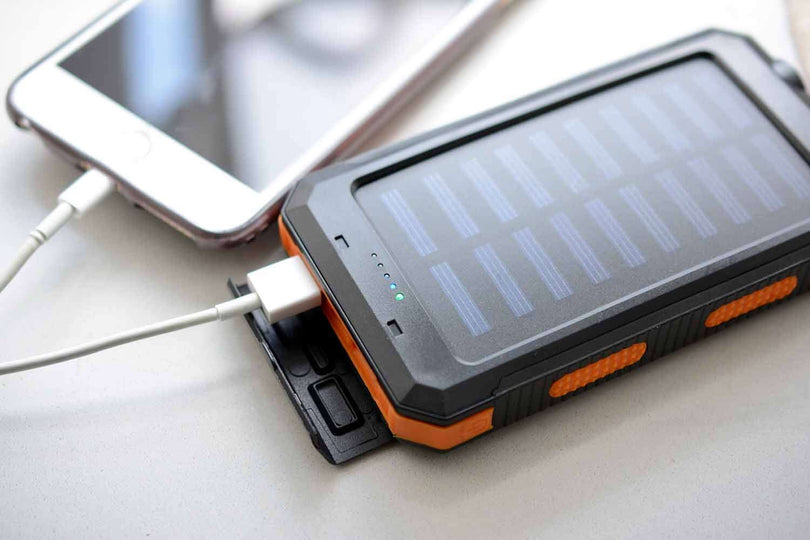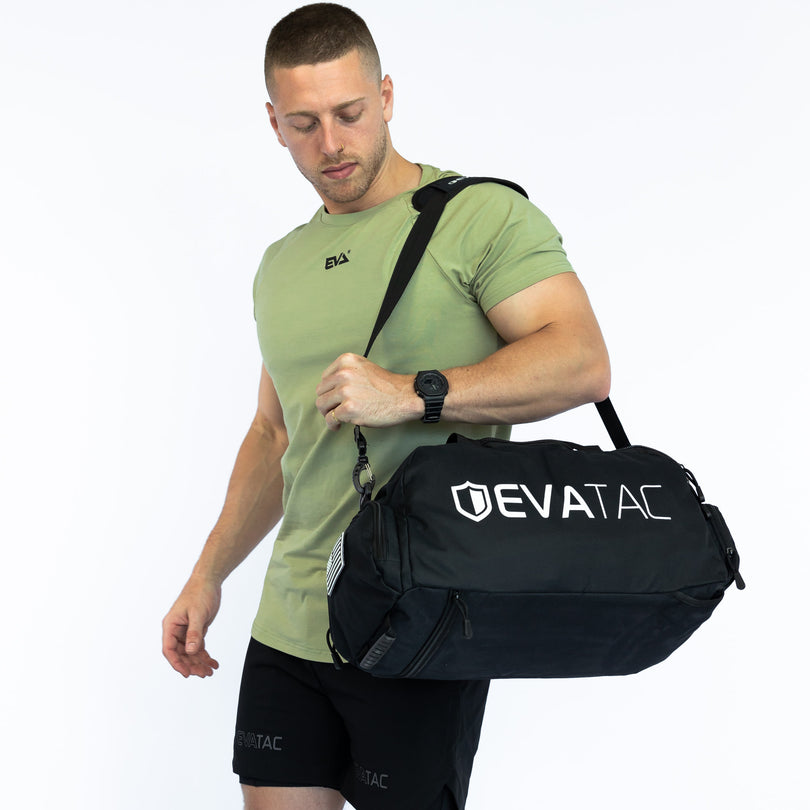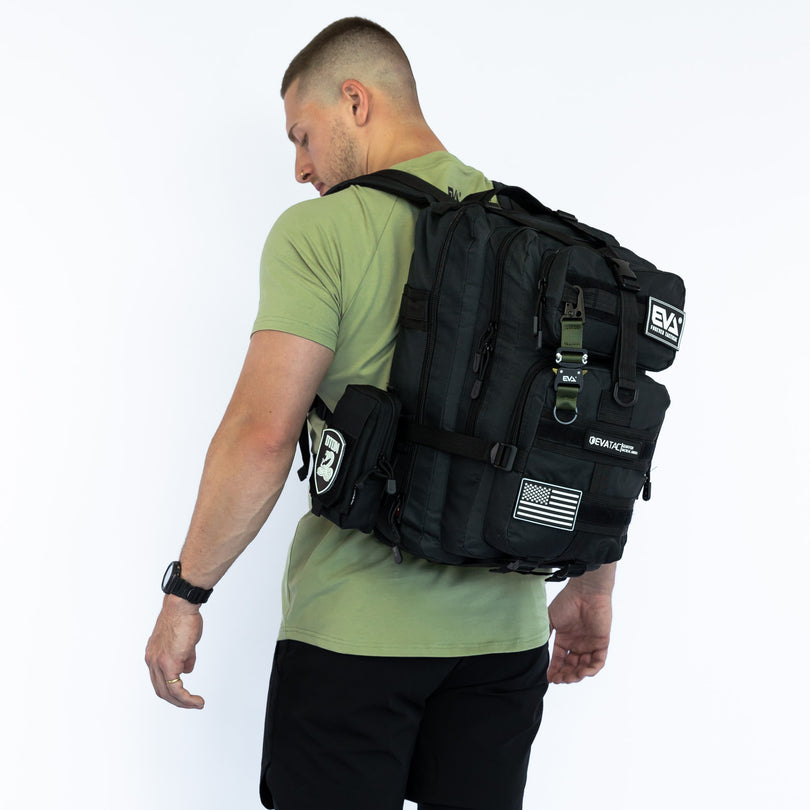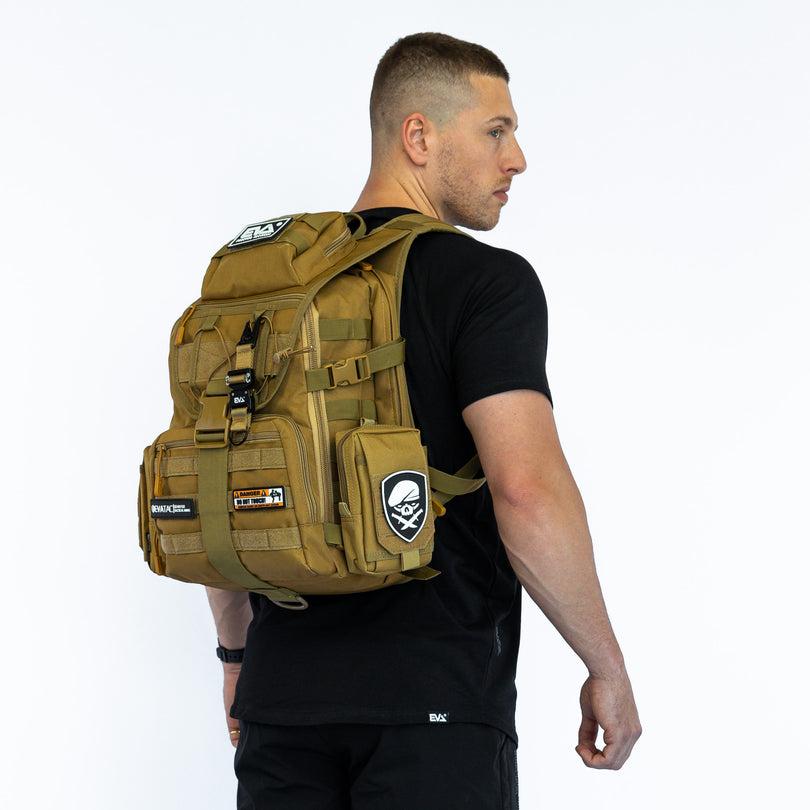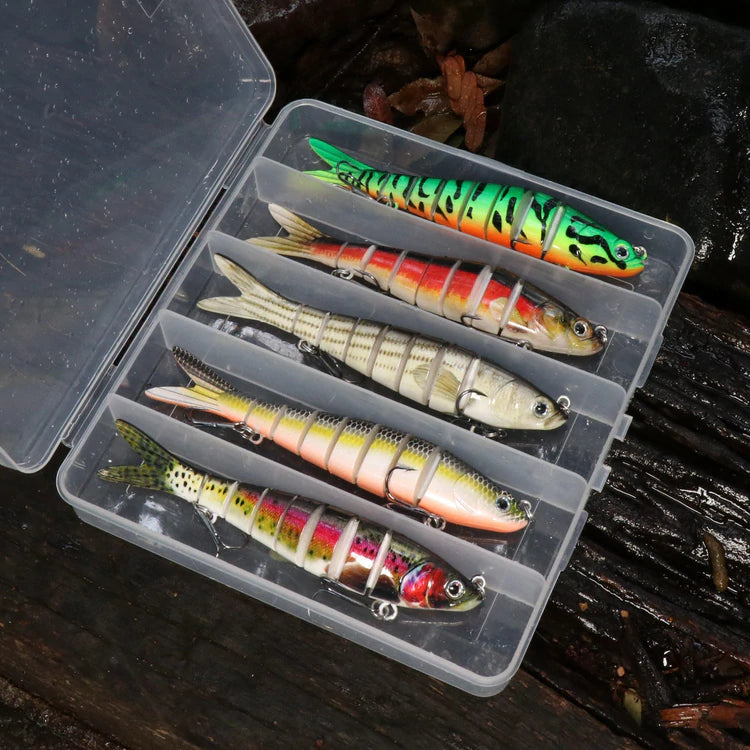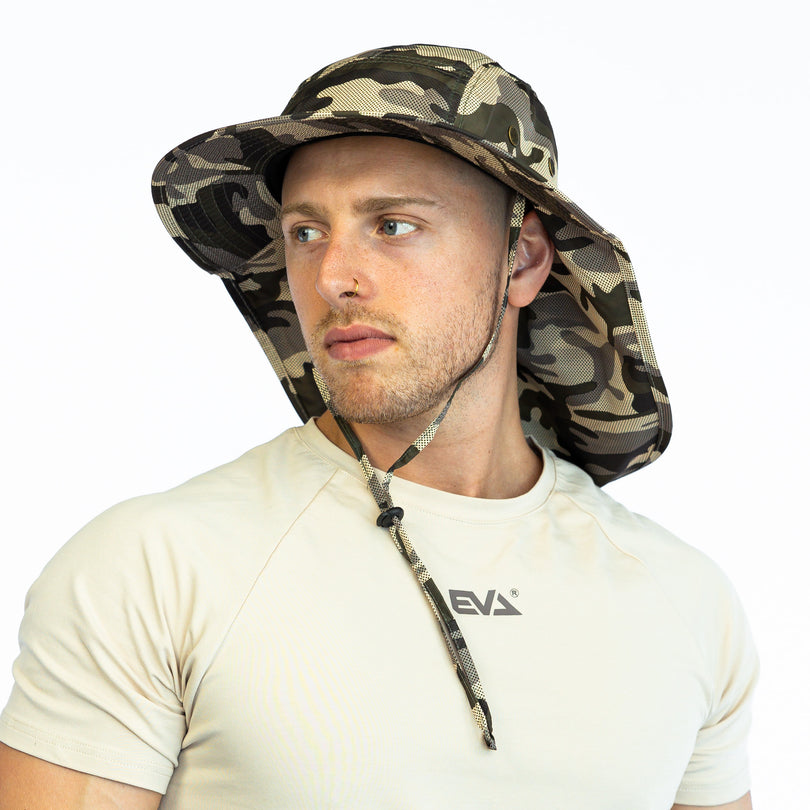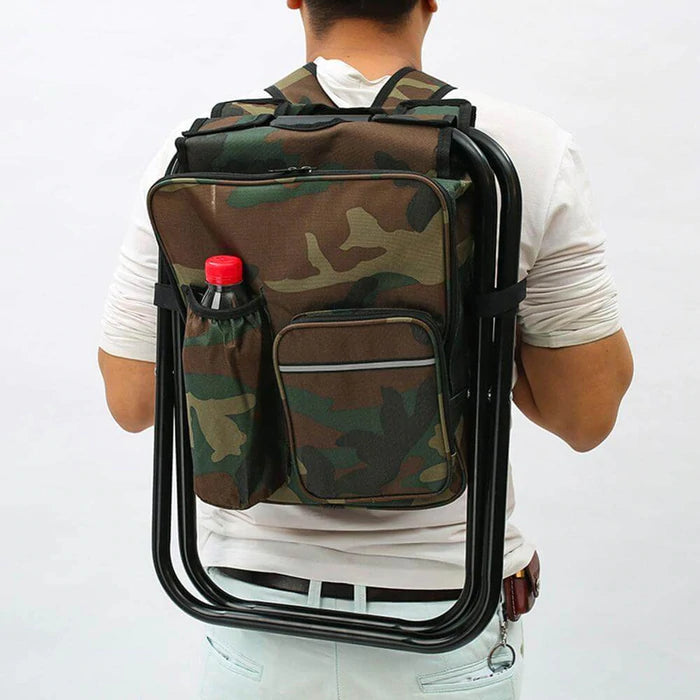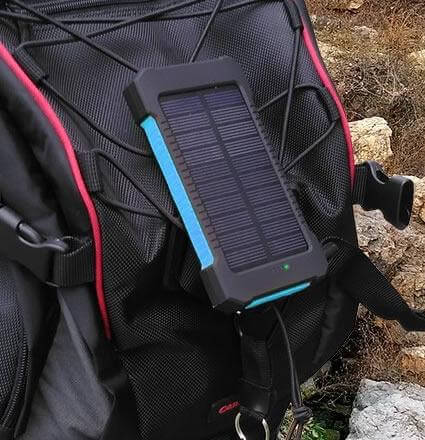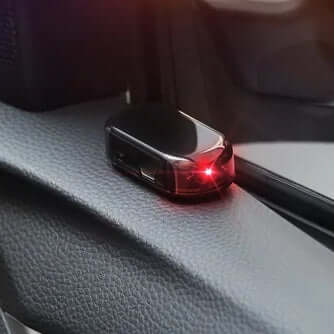How many times have you found yourself away from an outlet and realizing your phone only has 15% of its battery left? Or maybe you forgot to charge your tablet the night before, so you have no way to get through the meeting that’s going to take up all morning? Portable power banks solve these problems. They’re incredibly useful devices that make sure your devices are always ready to go, no matter where you are or how much time you have to charge them.
As we all know, our phones are important tools in our lives. They keep us connected to the world and help us stay on top of our work and social lives. While most portable chargers can be charged with an AC adapter and then plugged into your devices to provide them with extra juice, others are meant to be charged via micro USB, USB-A, or USB-C and carried around in your pocket or bag when you’re on the go, only to be used as a backup in case your phone runs out of power while you’re away from an outlet.
You can be ready for anything when you carry a portable power bank with you wherever you go, whether that’s to the office, on the road, or even to the great outdoors. But with so many options out there, it can be tough to figure out which one will work best for your lifestyle and budget in the years to come—especially when some manufacturers have yet to announce what their newest innovations will be in time for 2022.
Here at Koala Outdoor, we’ve put together this guide to help you find the best portable power banks of 2022 now—and at the best prices!
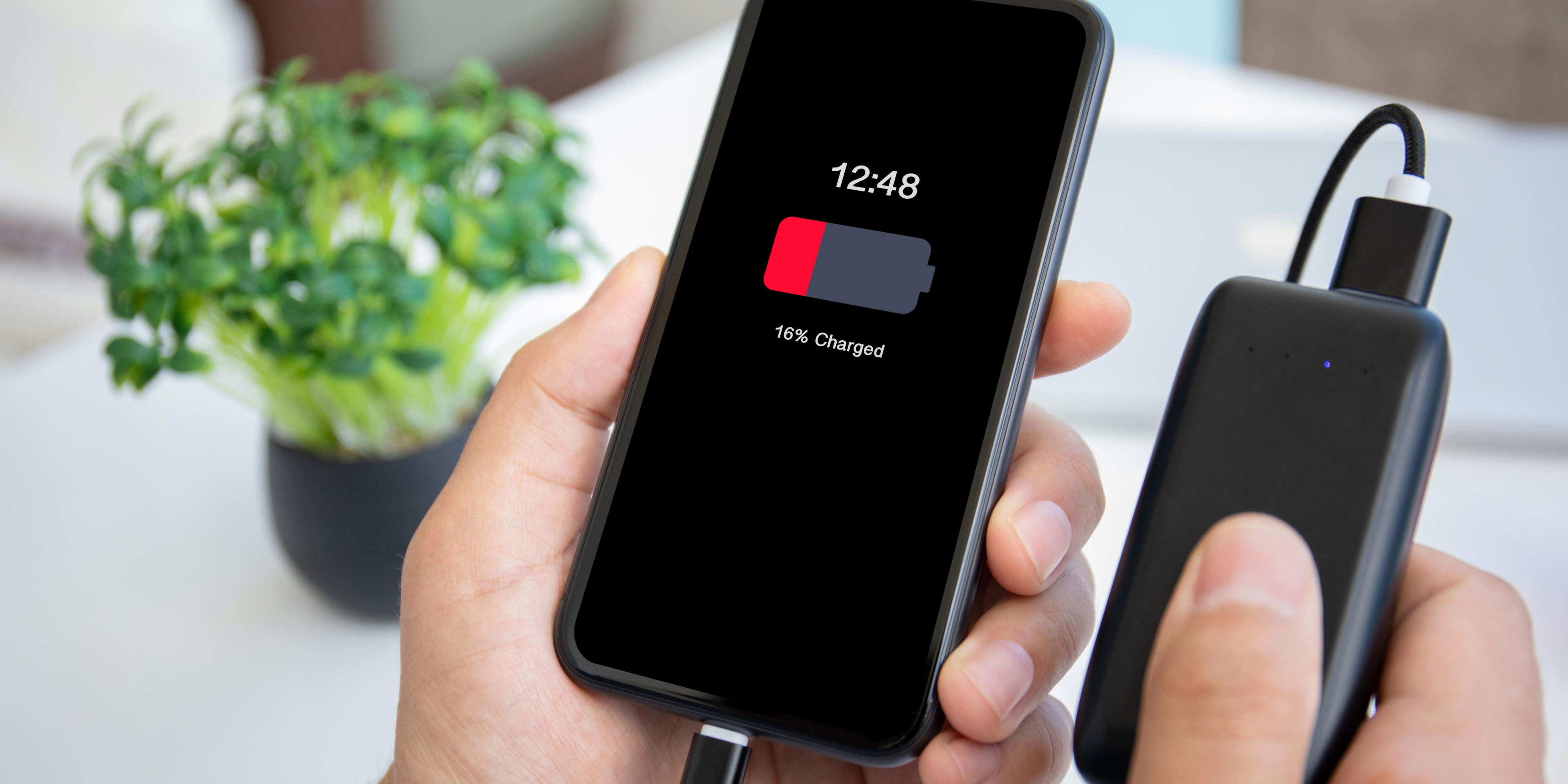 What are power banks?
What are power banks?
There's something to be said for the convenience of wireless charging, but what about when you're not at home? That's where power banks come in. Portable power banks are devices that store power so you can charge your devices on the go. They usually have a small, handheld design and come in a variety of shapes and sizes.
Some power banks even have extra features like LED lights or solar panels. They're especially useful for keeping your devices charged up on flights, road trips, and camping or hiking excursions.
Power banks can vary in size and shape—some are small enough to fit in your pocket while others are big enough to fit in your purse. There are even some crazy-looking ones that look like an old-school cassette tape or an external hard drive (but don't worry, they won't jam up your Walkman). They all have one thing in common though: they pack a lot of power into a small form factor.
A typical power bank has either a micro USB, USB A, or USB C port that you can use to recharge it—some power banks even have two ports so you can charge two devices at once. You just plug it into your computer or a wall outlet with the included cable and let it charge until the battery is full. It'll usually take about 2-4 hours for most standard power banks to charge from zero to 100% depending on the capacity and type of battery.
How to choose a powerbank: things to consider
Occasionally, we find ourselves in need of power when our phone is out of juice. It might be a nice idea to have a portable power bank with you during these times. The power bank can be charged at home, at work, or on the go for later use when there are no outlets available. Although it may seem like an expensive purchase, the convenience it offers will make you wonder why you didn't get one sooner.
There are a few things worth thinking about when you’re shopping for a portable power bank.
Capacity
How many times do you plan on using your power bank? Are you going to be charging your phone once a week or every day? If you're going to be using it daily, get a power bank that can hold enough juice for at least two charges. If you're only planning on charging it occasionally, a smaller power bank will do just fine.
When it comes to choosing a portable power bank, one of the most important factors to consider is capacity. This is measured in milliamp-hours (mAh), and it tells you how much power the battery can store. In general, the higher the mAh, the better—but that's not always the case. For example, a power bank with a capacity of 10,000 mAh can fully charge a phone with a 3,000 mAh battery about three times.
If you're only using your power bank to charge your phone once in a while, then you probably don't need a massive battery. On the other hand, if you're using it to charge multiple devices or to power something like a laptop, you'll want something with a higher capacity.
Compatibility
Compatibility is another important consideration. Not all power banks will work with all devices. Some are only compatible with certain types of phones or tablets, while others can charge multiple devices at once.
Size and portability
It's easy to find an enormous power bank that is capable of holding enough juice for weeks at a time. But if you want something small enough to easily fit in your pocket, that kind of power bank is hard to find. Some power banks are also so slim that they can slide into the palm of your hand, but if you need something larger than that, make sure the trade-off is worth it.
Ports
Another thing to consider is how many ports the power bank has. If you only need to charge one device at a time, then a single-port charger will suffice. But if you need to charge multiple devices, look for a power bank with multiple ports. Some even have built-in cables so you don't have to worry about keeping track of them.
Output
You'll probably find yourself plugging your device in before the battery is fully charged and putting it back on a charger before it's completely drained. This means you won't always be getting the full capacity out of your power bank—but some models have better output than others, and if yours has bad output, it could take forever to charge up your device.
Charging connectors
If you have an Apple device and want to be able to charge it on the go, you will need a lightning cable. If you have an Android device, you might have a micro USB cable and need a USB A or USB C cable. If you're looking for wireless charging, your device will require a specific set of hardware that is not included with the power bank.
Charging speeds
When it comes to charging your phone, there are generally three things you have control over the power bank or charger you use, the cable you use, and the device you’re charging. The problem is that most people don’t know what goes into each of these things and how they all come together to affect how quickly their devices charge (or if they can even charge).
Charging rates for devices like smartphones are measured in watts (W), but most power banks list the voltage (V) and the amperage (A). Thankfully, you can calculate the wattage yourself simply by multiplying the voltage and amperage. As an example: a 10,000 mAh power bank that lists 5V and 2A output have a maximum output of 10 W.
How fast your phone charges also depends on your device, the standards it supports, and the charging cable you use. Many smartphones, including Apple’s iPhones, support the Power Delivery (PD) standard which can charge up to 20 W. A few phones, such as Samsung’s Galaxy S range, support a supplementary PD protocol called PPS (Programmable Power Standard) that goes up to 25 W. Many phones also support Qualcomm’s proprietary Quick Charge standard which has a variety of different levels with the latest, Quick Charge 4+, topping out at 27 W.
Generally speaking, the thicker and shorter the cable, the better. That’s because a thicker cable has less resistance which results in less heat buildup and faster-charging speeds. A shorter cable is also less likely to get tangled than a longer one.
As you can see, there are quite a few things to consider when choosing a portable power bank. But as long as you keep all of these factors in mind, you'll be able to find the perfect power bank for your needs.
Travel
When you're flying with a power bank, the critical thing to know is that it must be in carry-on baggage only. You can't check it in your luggage, and you can't have it in your carry-on bags if you have checked bags. This is due to FAA regulations; all lithium batteries must be kept with the plane's crew during flights.
While there is no specific wattage limit on power banks as long as they are under 100 Wh, many airlines are getting stricter about which batteries they will allow on board. In order to avoid any confusion, it's always a good idea to call the airline before you fly and ask them what their battery policy is (many airlines don't specify this information online).
Some airlines specifically mention that they allow up to 100 Wh of batteries per customer while others explicitly say that they do not allow larger capacity power banks. Be sure to call ahead of time because many airlines are strict about these rules: if you show up at the airport with a power bank that's too big, they might not let you take it on board.
Types of power banks
As our phones become more and more powerful, they require more and more power to charge—and that's where portable power banks come in. They act as a backup battery for your phone, tablet, or any other device that charges via USB. And with all of the new features that come with USB C and wireless charging, it's a good idea to have one on hand (or five!)
USB-C ports typically support some, but not all, fast-charging protocols for smartphones and tablets. Most often, a portable charger's USB C port can be used for both power input and power output, but some less expensive battery packs may only support USB-C for power input.
These days, power banks come in tons of shapes and sizes—so many that it can be hard to figure out which one is best for you. So if you're wondering what all these power bank terms mean when you're shopping around, here's a quick list:
Standard power banks are small enough to fit into your pocket; they usually have a USB A port for charging. These are great for most people!
- Fast-charging power banks have a higher output (usually 2A) and are able to charge your device faster than standard power banks. If your phone supports fast charging via USB C or wireless charging, this is probably the type of charger you want.
- Wireless chargers are like a hybrid between fast chargers and standard chargers: they can charge your device wirelessly, but also come with a standard USB port so that they can charge other devices.
- Pass-through chargers are able to charge your device and be charged simultaneously. This is great if you're in a pinch and need to top up your power bank quickly. Passthrough charging lets you charge both the power bank and connected devices at once, freeing up power sockets if you are going to have to leave it plugged in for long periods.
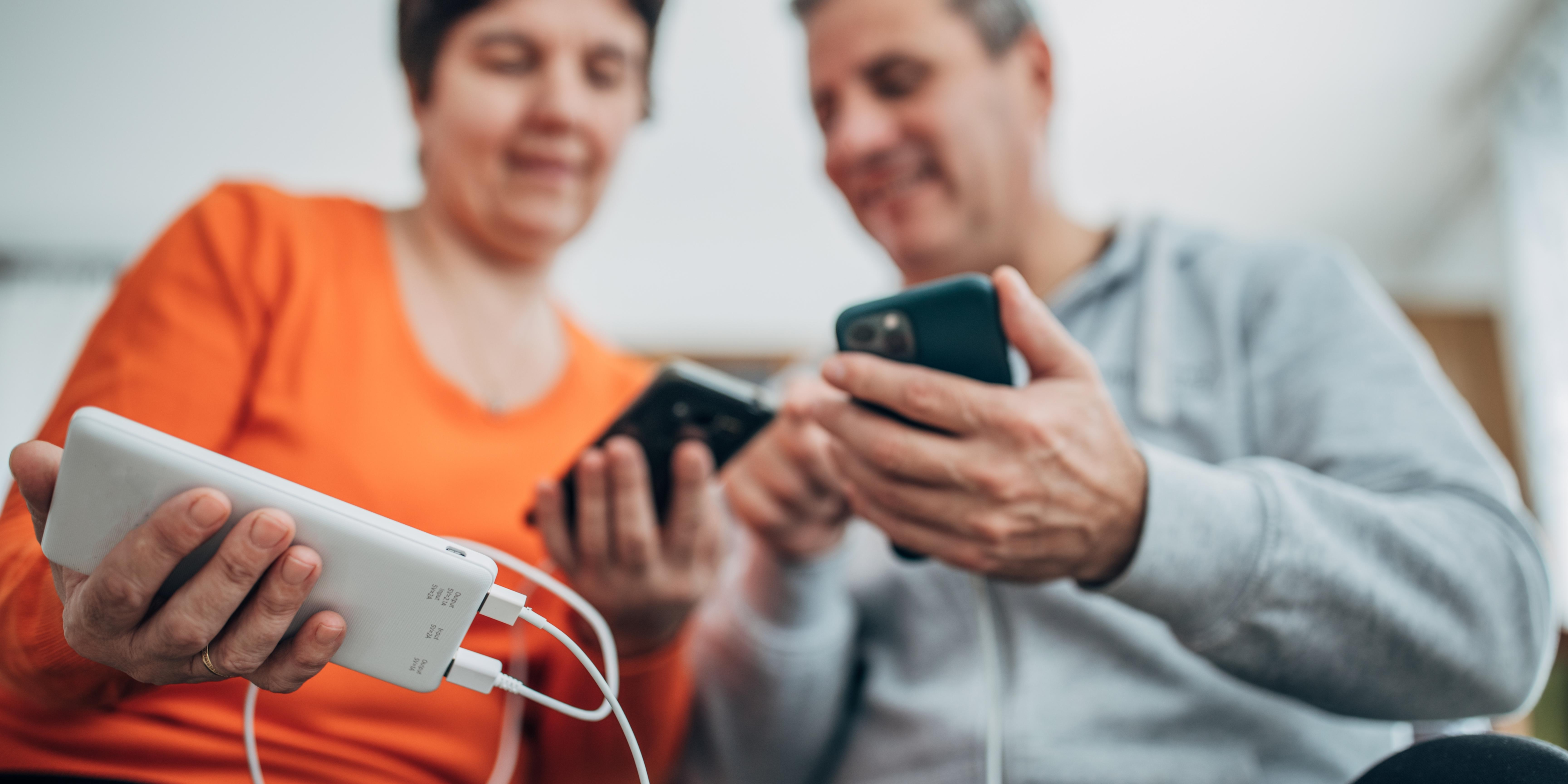 Which powerbank is the best?
Which powerbank is the best?
With technology becoming thinner, sleeker, and more useful every day, most of us have to turn to a portable charger to keep our devices powered. Whether you're using a favorite phone, tablet, or laptop model—or even your brand new smartwatch—you're constantly in fear that your battery will die and you'll be left alone with no way to contact anyone or get in touch with your friends and family. Even if you do find an outlet for a charge, it can take hours for the battery to fully recharge.
The best portable chargers offer plenty of juice—ideally at least 3,000mAh—to keep your device running smoothly until you can find another power source. Some of the best power banks are built to fast charge devices such as iPhones and Samsung Galaxy models, while others have wireless charging options that allow users to place their phone or device on the charger without plugging it in. Meanwhile, a growing number of power banks come equipped with AC adapters that let you plug into the wall when there isn't enough juice on hand.
Some power banks also feature LED flashlights built right into the design—useful for finding your keys in the dark or going on camping trips without having to bring along a separate flashlight. Other features include built-in cables, water resistance, and ruggedized designs that make them ideal for taking on the go.
Once you've considered these factors, check out our list of best portable chargers to find one that fits all of your needs!
Which is the best power bank in Australia?
There are a lot of different power banks on the market, so it can be hard to know which one to buy. To help you make the best decision for your needs, we've put together this guide on the best power banks to buy in Australia this 2022.
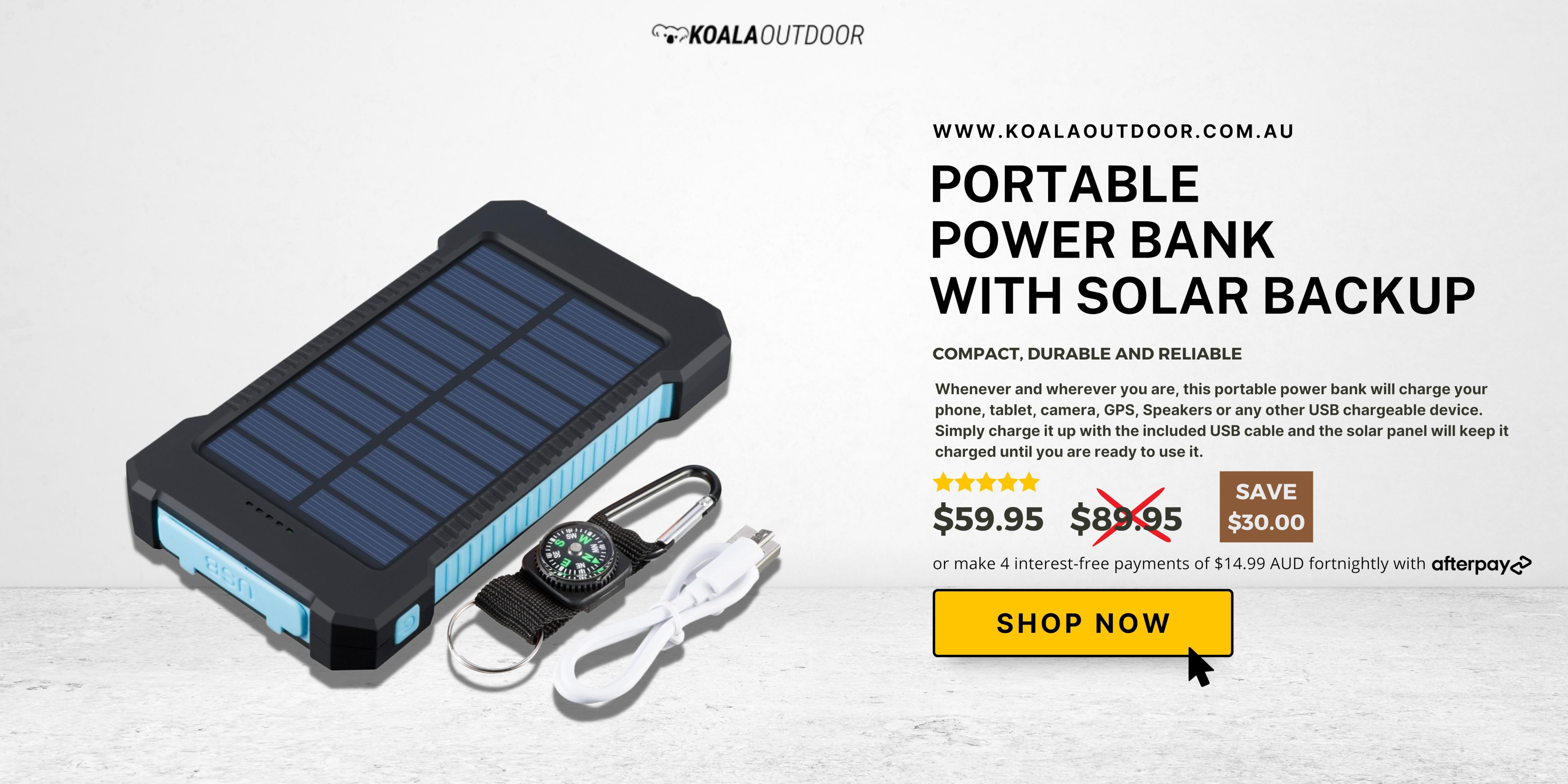 Portable Power Bank With Backup Solar
Portable Power Bank With Backup Solar
Whether you're out camping, hiking, or spending a day at the beach, Koala Outdoor's Portable Power Bank With Backup Solar will keep your simple devices charged until you're ready to use them. They keep a variety of devices charged, including our phones, tablets, Nintendo Switch consoles, and even our laptops when we need them most.
If you're someone who spends a lot of time in the great outdoors, you know how important it is to have enough battery power. Keep it in your car or purse for a backup power source whenever you need one. The portable design allows for easy portability, fitting easily into any bag or pocket.
This portable solar power bank features two USB A ports so you can charge two devices simultaneously. Solar panels on the back let you charge it up when desired, and also allow it to be used as an emergency flashlight! The outside of the unit is water resistant and durable enough to be dropped without damaging it. A carabiner with a compass is included so that this multi-function device can clip onto everything you own.
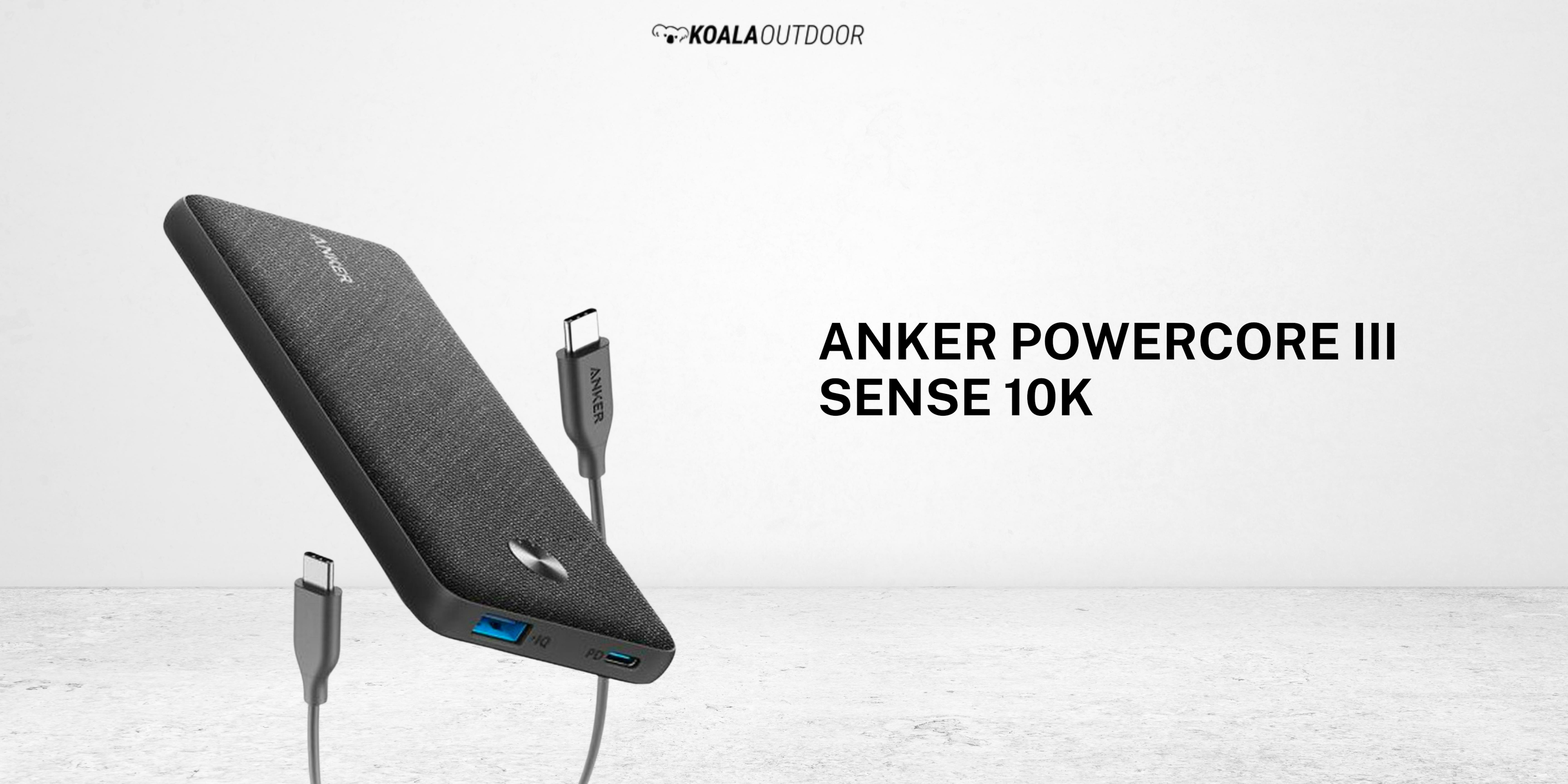 Anker PowerCore III Sense 10K
Anker PowerCore III Sense 10K
If you're looking for a power bank that can charge multiple devices at once, we recommend the Anker PowerCore III. This is the best portable charger that has a capacity of 10,000mAh, meaning it can charge an iPhone 8 up to three times or a Samsung Galaxy S8 up to two and a half times. It also features fast-charging technology that can charge compatible devices up to 80% in just 35 minutes. The wireless charger is rated at 10W. Place your device on the centre of the circle.
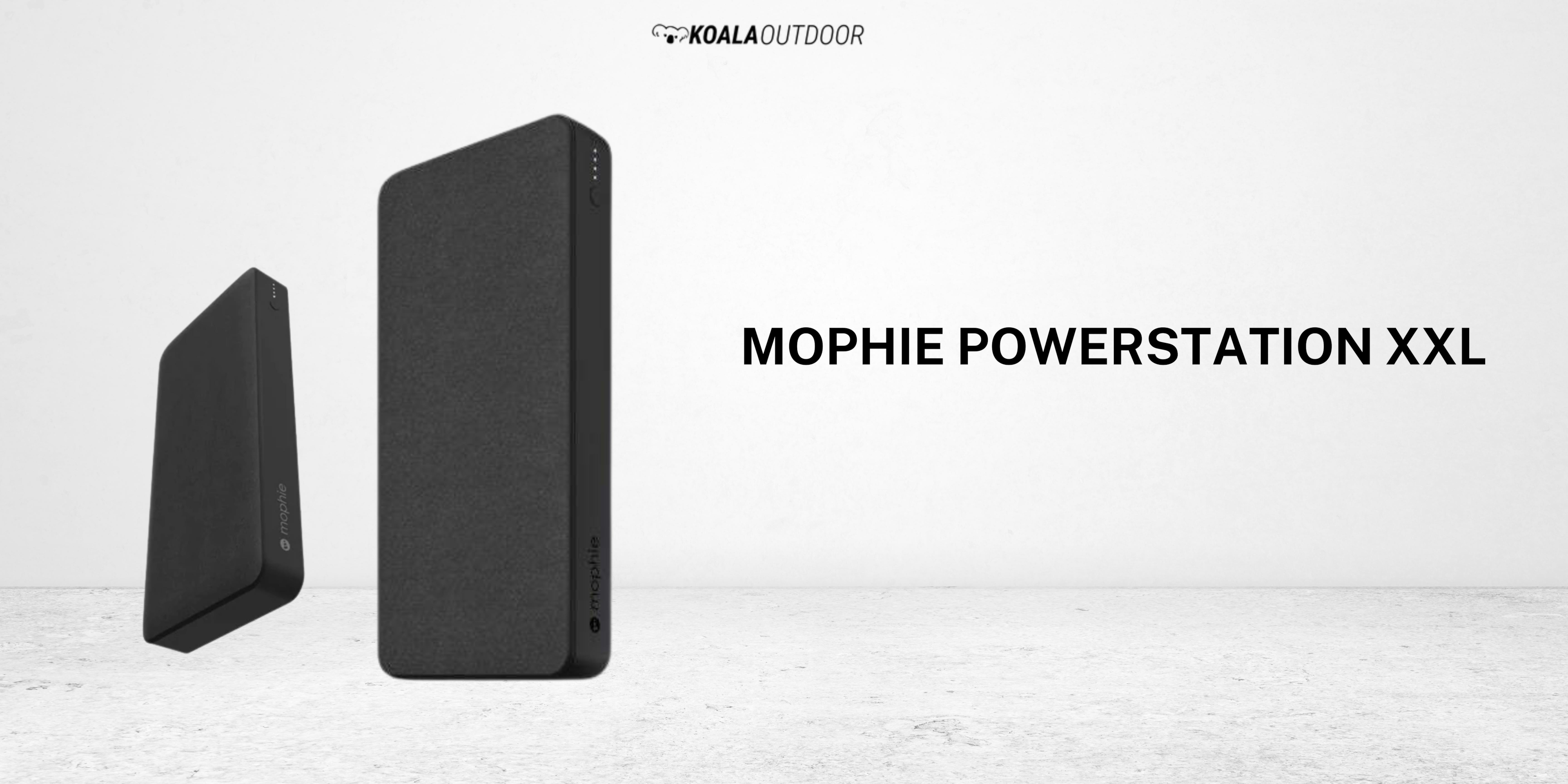 Mophie Powerstation XXL
Mophie Powerstation XXL
If you're looking for a power bank that's specifically designed for iPhones, the Mophie Powerstation XXL is a great option. Designed to deliver fast charging, the battery can charge most phones over six times, tablets at least two times and any other USB device multiple times. This power bank has a capacity of 12,000mAh and can charge an iPhone 8 up to four times or an iPhone X up to three and a half times. It also features built-in Lightning and USB-C cables, so you can charge your iPhone and other devices without having to carry around separate cables.
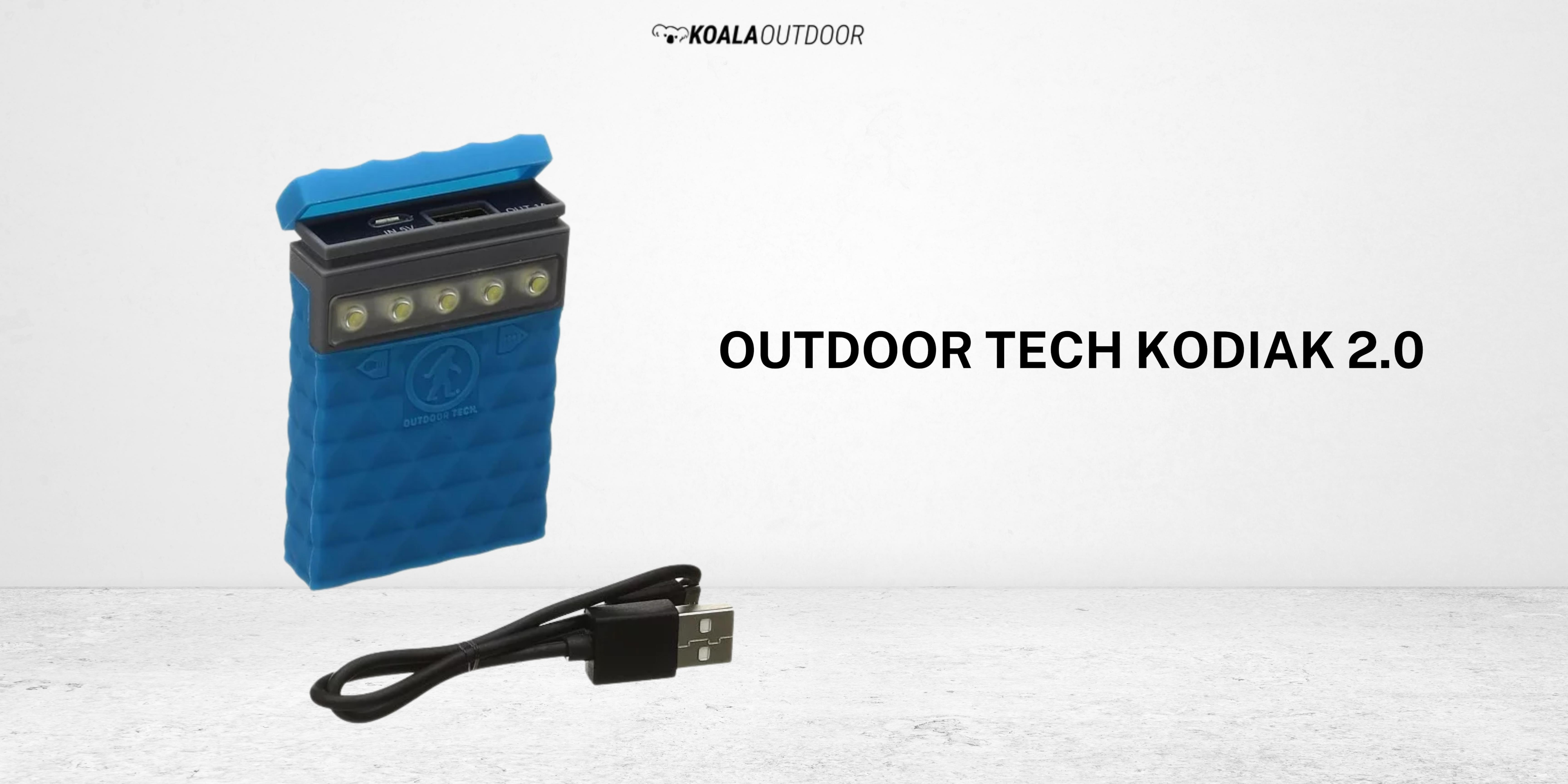 Outdoor Tech Kodiak 2.0
Outdoor Tech Kodiak 2.0
If you're looking for a rugged power bank that can withstand the elements, we recommend the Outdoor Tech Kodiak 2.0. This power bank has a capacity of 10,000mAh and is IPX6 water-resistant, meaning it can withstand being splashed with water or dropped in the rain. It also features a built-in LED flashlight, making it perfect for camping trips or other outdoor activities.
No matter which power bank you choose, make sure to consider your needs and the devices you'll be using it with before making a purchase. With so many great options on the market, you're sure to find the perfect power bank for your needs.
 Best power bank for camping
Best power bank for camping
When it comes to finding the best portable chargers for camping, you'll want to consider a few things. First, think about how much juice you'll need—larger capacities mean more weight and bulk, but they'll also charge your devices more times before needing to be recharged themselves.
Second, consider what devices you'll be charging—some of the best power banks feature multiple ports that can charge more than one device at a time, while others have special fast-charging ports that are optimized for specific devices.
Third, think about features like built-in cables, water resistance, and ruggedized designs that make them ideal for taking on the go. And finally, consider your budget—power banks can range in price from under $20 to over $100, so it's important to find one that fits your needs and your budget.
With so many great power banks on the market, it can be hard to know which one to choose. But with this guide, you'll be able to find the perfect power bank for your camping needs.
Best power bank for hiking
One of the most important things to consider when choosing a power bank for hiking is its capacity. This is because you’ll want a power bank that can hold enough charge to keep your devices going for the entire hike. A good rule of thumb is to choose a power bank with a capacity of at least 10,000 mAh.
Another important thing to consider is the power bank’s weight. This is because you’ll be carrying it with you on the hike, and you don’t want it to be too heavy. A good rule of thumb is to choose a power bank that weighs less than 1 pound (0.45 kg).
Finally, you’ll want to consider the power bank’s portability. This is because you’ll need to be able to easily carry it with you on the hike. A good rule of thumb is to choose a power bank that is small and lightweight.
Additionally, make sure that it has a durable design that can withstand being dropped or bumped.
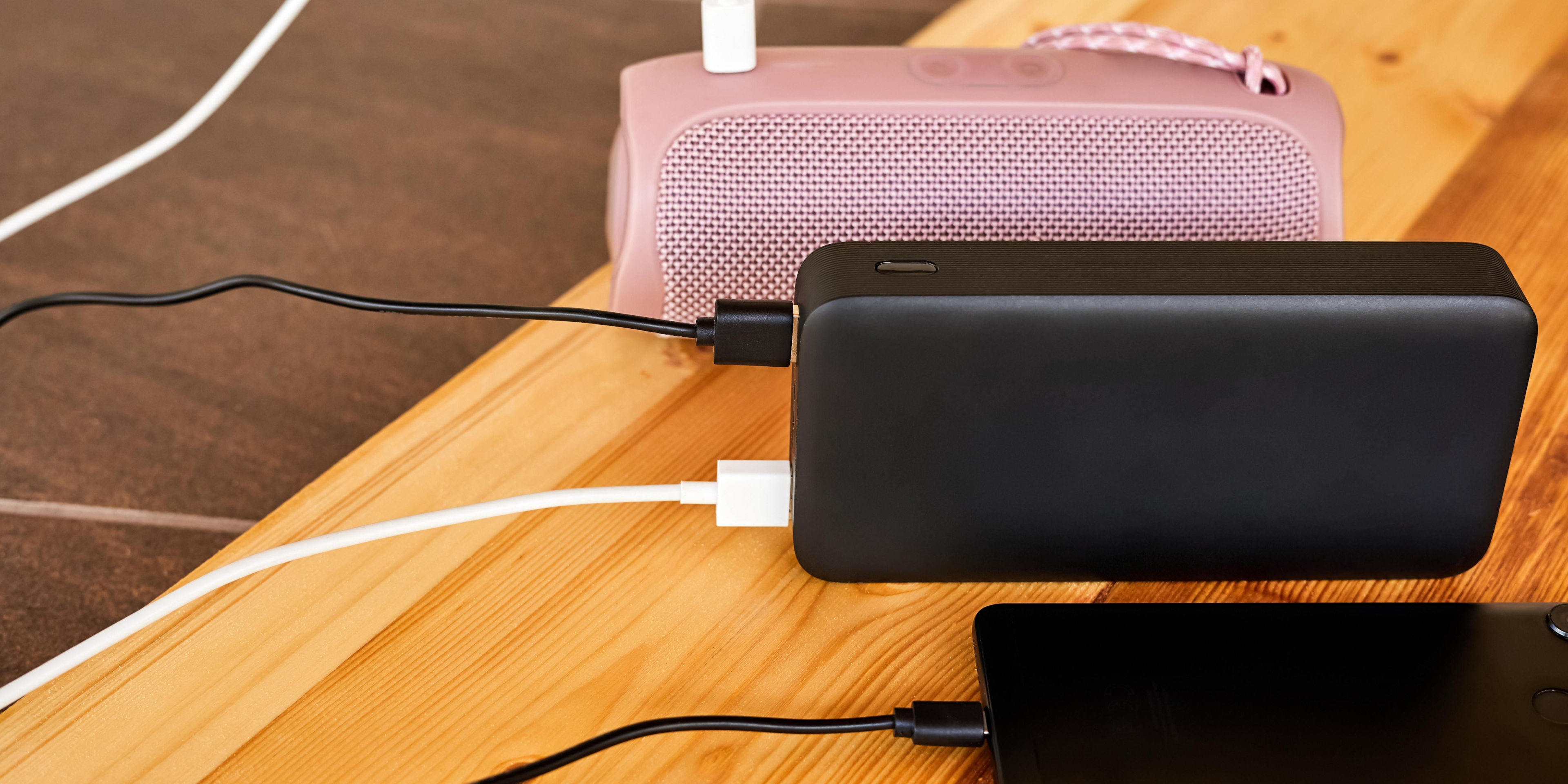 What does a powerbank do?
What does a powerbank do?
A power bank is a portable device that stores energy and can be used to charge electronic devices, such as phones, tablets, and laptops. Power banks range in size, capacity, and features. Some power banks have two USB A ports so you can charge multiple devices at once, while others have built-in cables for charging specific devices.
Power banks can be charged via USB or AC adapter, and they typically hold a charge for several months. When the power bank is depleted, you can simply recharge it and use it again.
How to use a power bank
To use a power bank, simply connect your device to the power bank using a USB cable. Most power banks have a built-in charging indicator so you can see how much power is remaining. Once your device is fully charged, disconnect it from the power bank.
There are a few things to keep in mind when using a power bank:
- Make sure the power bank is fully charged before using it.
- Do not leave your device connected to the power bank for too long, as this can damage the battery.
- Do not expose the power bank to extreme temperatures, as this can also damage the battery.
- If you are not using the power bank for an extended period of time, store it in a cool, dry place.
If you follow these simple guidelines, your power bank should last for many years.
How to buy the best power bank
Are you looking for your next high-capacity portable charger? You’re in luck. Here are some important considerations and tips before you buy. Let’s start with evaluating your needs:
How many devices do you want to charge at once? Are they laptops or smartphones? What is your budget? These are critical questions when considering a power bank. For example, if it's high capacity that matters most, there may be a trade-off in terms of weight. Another thing to keep in mind is charging speeds.
Most high-capacity power banks will have an input speed and an output speed, so ensure that both of those match what your devices need before making a purchase. Finally, consider your budget. If you don't plan on using your power bank very often, something less expensive might suffice. If you plan on using it every day (or multiple times per day), then spending more now could save money in the long run.
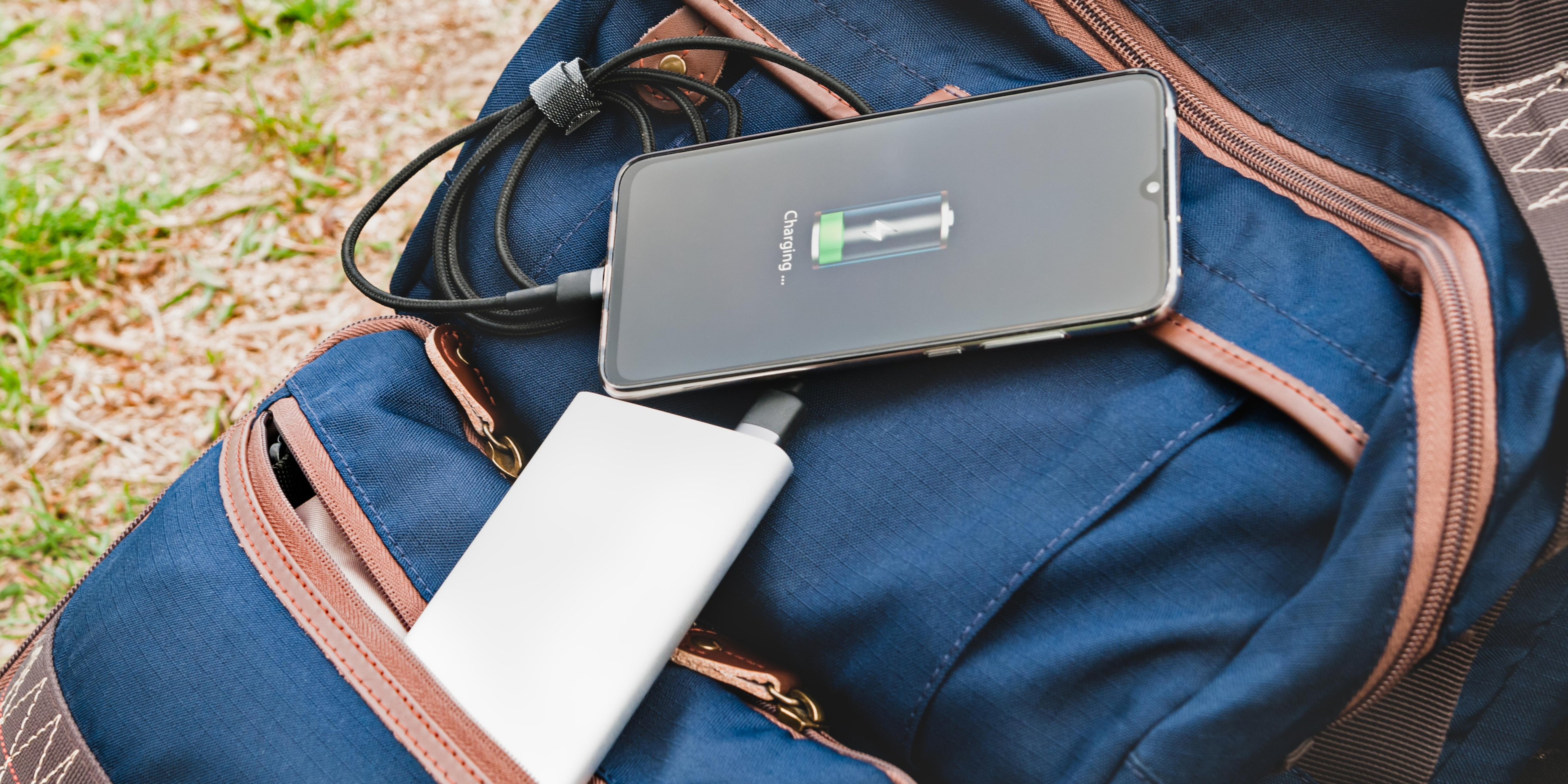 How long does a powerbank last?
How long does a powerbank last?
The best portable chargers will typically last a full day on one charge, but there are some with much bigger batteries that can go for two or three days. If you’re using your phone all day, you’ll need a power bank with at least enough juice to last from early morning until late evening so you don’t run out of battery in the middle of important calls or meetings.
We recommend getting a charger with at least 2,000 mAh if you plan to use it every day. Anything less than 1,500 mAh is probably too small for everyday use. A good rule of thumb is to get a power bank with at least as many milliamp hours (mAh) as your smartphone has internal battery capacity. So, for example, an iPhone X has about 2,716 mAh, and an iPhone 8 Plus has about 3,248 mAh—so you should look for a portable charger with around 5,000 mAh or more.
You’ll want to get a capacity portable charger if you plan to also use your power bank while charging other devices like tablets and laptops. Of course, higher capacities come with a larger size and heavier weight, so be sure to keep portability in mind when choosing your ideal charger.
What factors affect powerbank performance?
For most people, the best power banks have become a necessity these days because they let us stay connected anytime and anywhere. There are many different kinds of these gadgets available on the market today ranging from basic ones to those that feature extra bells and whistles such as built-in lights or music players.
But what really makes them stand out is their capacity for charging your devices. The best portable chargers will charge your smartphone at least once before needing to be recharged themselves—but some can even recharge your phone several times over before needing a charge themselves.
You’ll find that there are two main factors affecting how well any given charger performs: its capacity (mAh) and its charging speed (mA). A higher mAh rating means you can use it for longer without having to recharge it yourself—but faster-charging speeds mean you can get back up and running more quickly when you do need to plug in.
Some of our favorite portable chargers offer both fast charging and high capacities. These are definitely worth considering if you want to be able to top off your device while also giving it enough juice for a full day away from an outlet.
How long does it take to charge my phone with a power bank?
Charging time depends on two things: how much battery life remains in your device and how much juice is left in your power bank. If you try to recharge an empty battery with a fully charged power bank, then obviously it won't take very long at all—you'll likely see 100% after just 30 minutes or so.
But if you're trying to charge a completely dead phone, expect it to take much longer. This is especially true if you're using a low-capacity power bank. We recommend getting one with at least 5,000 mAh capacity if you plan to use it every day—anything less than 3,000 mAh might not give your smartphone enough juice for a full day's use.
It's also important to note that bigger batteries tend to take longer than smaller ones because they have more cells inside them and each cell needs time to fill up with electricity. So don't expect miracles from 10,000 mAh models; they're designed for emergencies only!
How to choose a power bank? When shopping for new portable chargers, you'll notice that most brands list something called mAH right next to mAh. If you aren't familiar with these terms, don't worry—they're actually pretty easy to understand. The first number refers to milliamp hours and indicates how much energy is stored in each unit of measurement.
In other words, mAH tells you how long a single charge should last under normal conditions (charging once per day). But keep in mind that batteries wear down over time and may lose as much as 20% of their original capacity within 500 charges. That's why we always advise picking up a model with at least 5,000 mAh capacity if possible.
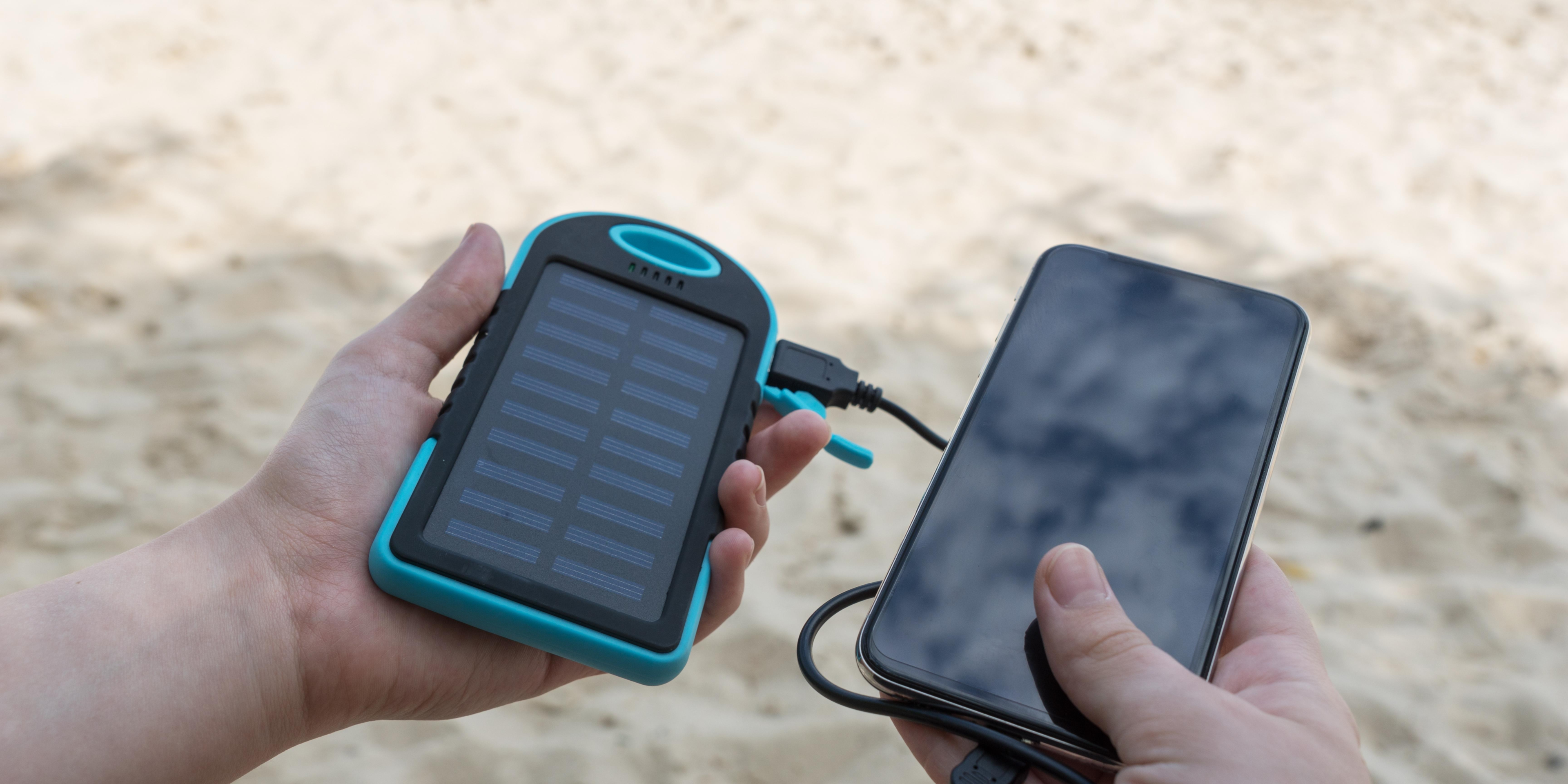 What is a good mAh for a powerbank?
What is a good mAh for a powerbank?
When purchasing a power bank it’s important to know that mAh does not equal power. Just because something has a high mAh rating doesn’t mean it will last for long or charge multiple devices. This is why it’s also important to understand how much power delivery your device takes.
These two factors are what make up portable chargers and play an important role in how quickly they can charge your devices. For example, if you have a Samsung Galaxy S8 with a 3000mAh battery, you’ll want to look for a charger with at least 10,000mAh of capacity.
A charger with less than 10,000mAh of capacity would take almost three times as long to fully charge your phone compared to one with at least 10,000mAh of capacity. The best way to figure out how much power delivery you need is by looking at your device's battery size and finding out its charging requirements.
Then compare that number against the manufacturer's specifications on their website or other reputable sources online. You should also consider whether you plan on charging more than one device at once when deciding on which portable charger to purchase.
 Conclusion
Conclusion
As we head into 2022, portable power banks will continue to be a popular choice for those who need to keep their devices charged on the go. There are a variety of power banks available on the market, so it’s important to consider things like capacity, compatibility, and portability when choosing the right one for you.
Portable power banks are a great way to keep your devices charged when you’re on the go. Once you’ve found the perfect power bank for your needs, be sure to follow the proper care instructions to keep it in good condition. With a little bit of research, you can find the perfect power bank to keep your devices charged and ready to go.





